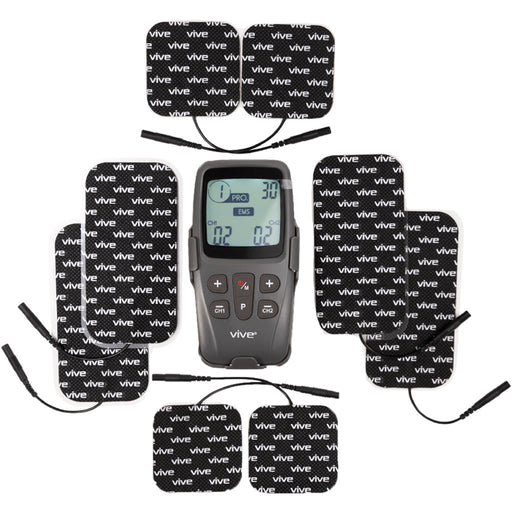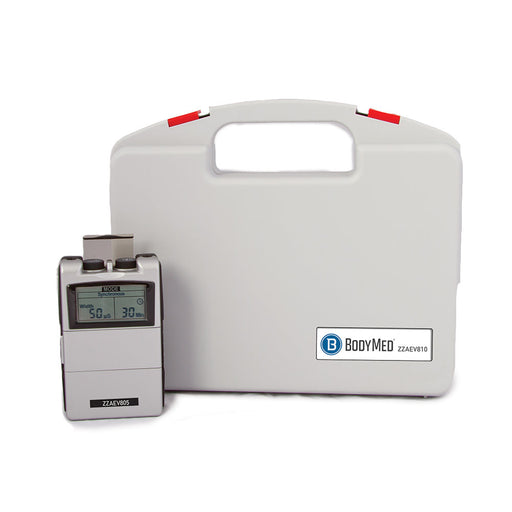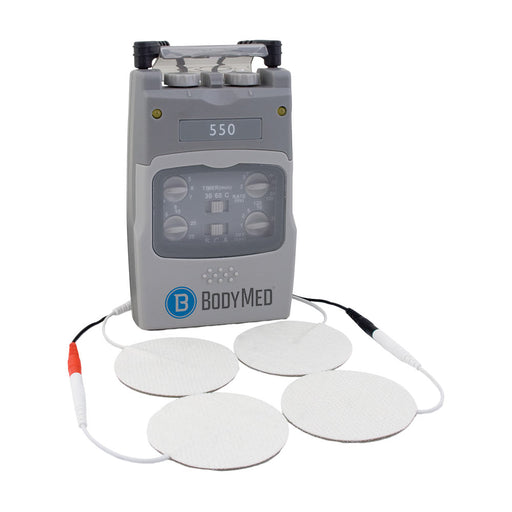What exactly are EMS machines and how do they operate?
EMS machines serve as the apparatus employed in the practice of electronic muscle stimulation (EMS) within physical therapy and fitness regimens. In this method, these machines dispatch electrical impulses via electrodes strategically placed on the skin in the targeted treatment zone. While notably utilized in rehabilitating the quadriceps post-knee surgery, an EMS device plays a crucial role in treating various muscle groups in need of revitalization. The essence of electrostimulation lies in the EMS device delivering electrical impulses to prompt muscle contractions, thereby offering exercise-like benefits without the associated risks of injury. Substantial field experiences further attest to the efficacy of EMS in achieving these objectives.
What advantages does an EMS machine offer?
Alleviate muscle pain: Users have reported a reduction in pain through EMS application, offering relief without the need for additional medical measures.
Enhance blood circulation: Engaging in lower frequency EMS protocols promotes increased blood flow to muscles. The rhythmic electric pulse cycle contributes to an improved circulation system for the muscles.
Augment muscle strength: EMS proves to be an efficient method for enhancing both muscle strength and contraction, providing a means to stimulate muscle fibers without the necessity of adding external weight.
Alleviate stress: The effective contractions induced by EMS prove beneficial in promoting body relaxation and stress reduction.
Expand range of motion: For individuals grappling with arthritis, EMS becomes a valuable ally by increasing joint range of motion, ultimately leading to a reduction in joint pain and inflammation.
Prevent pressure sores: Extended periods of bedridden conditions can lead to the development of pressure sores. EMS units come to the rescue by promoting increased blood flow and muscle stimulation, effectively preventing the occurrence of these sores.
Do EMS units have the potential to enhance muscle development?
Within contemporary therapeutic spheres, EMS units are increasingly recognized as a viable means to augment muscle volume, function, and mass. This advantage proves beneficial not only for individuals seeking muscle recovery after injury or surgery but also for patients with significant weakness who are unable to engage in conventional exercise regimens. Beyond their role in building muscle, EMS machines exhibit positive effects on myocardial, endothelial, and cognitive functions. Furthermore, despite a notable increase in creatine kinase levels during the inaugural session, studies affirm the safety of EMS as a treatment modality.
Can an EMS device induce muscle growth?
Consistent utilization of the EMS device has the potential to trigger muscle growth. Recent research employing both experimental models and human subjects supports the claim that EMS muscle stimulation units can enhance muscle mass by around 1% and boost muscle function by 10 to 15% after a five to six-week treatment period. The EMS unit positively impacts the anabolic to catabolic balance and activates satellite cells during three sessions per week. It's essential that the electrical pulses have a duration of 300 to 405 microseconds and a frequency of 50 to 100 Hz.
How do TENs and EMS units differ?
While both are electronic stimulation devices functioning on the same principle, they serve distinct purposes. TENs units target sensory nerve endings to intercept pain signals en route to the brain. Conversely, EMS devices induce muscle contractions for muscle development and rehabilitation. Both are beneficial for addressing back pain, aiding injury recovery, managing muscle spasms, and alleviating arthritis. Notably, only the EMS unit facilitates muscle building, while solely the TENs unit contributes to labor and anxiety relief.
What precisely constitutes an EMG machine?
An EMG machine is a device designed for conducting electromyography (EMG) tests. This diagnostic procedure is adept at identifying neuromuscular damage by gauging muscular reactions to nerve stimulation. The initiation of an EMG test involves the insertion of a needle electrode directly into the muscle by the administrator to capture electrical activity. To execute its function, the EMG apparatus transmits the recorded electrical activity from the muscle to an oscilloscope and an audio amplifier for thorough examination and assessment. The EMG machine meticulously records electrical activity in varying states, including when the muscle is at rest, in a slight contraction, and during forceful contraction.



